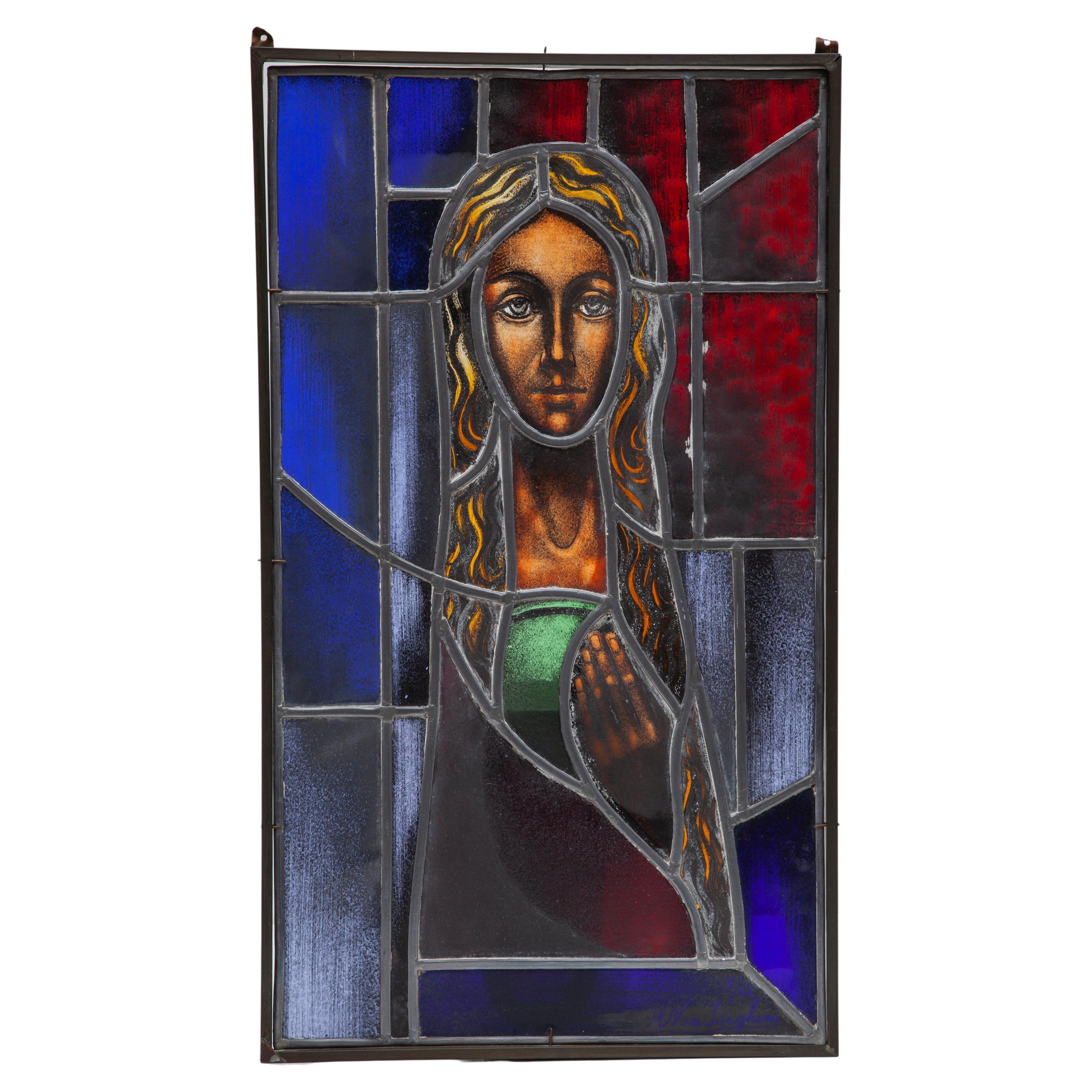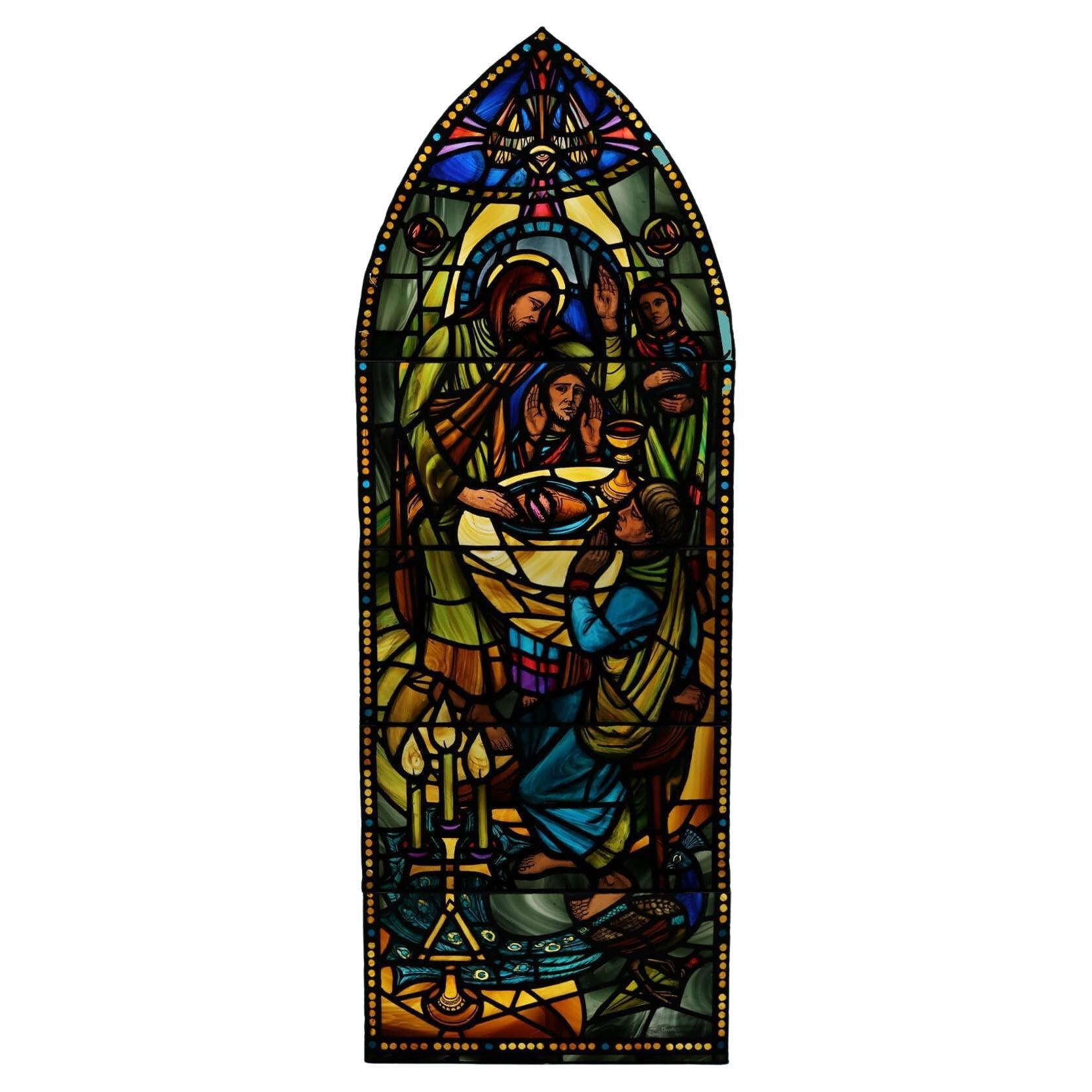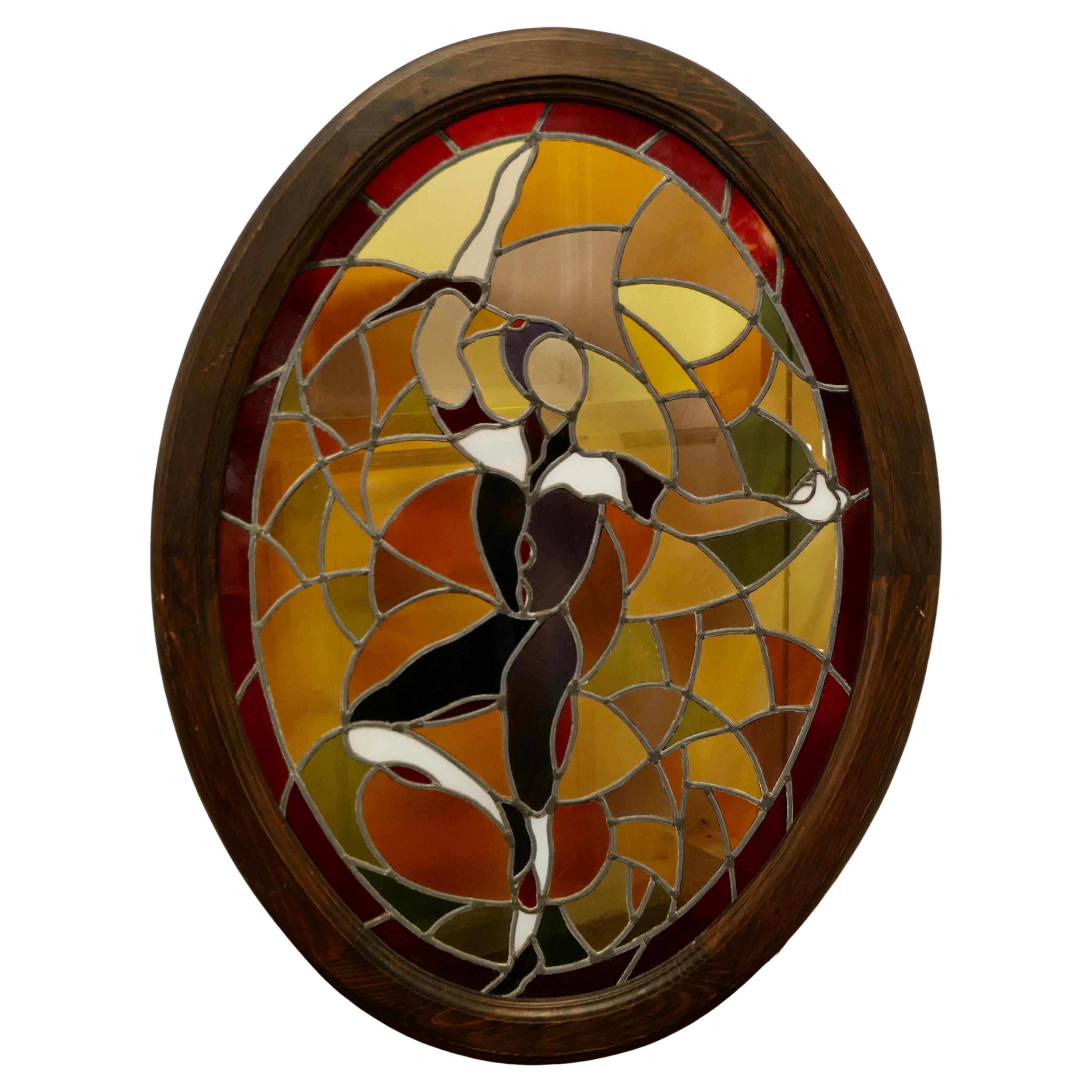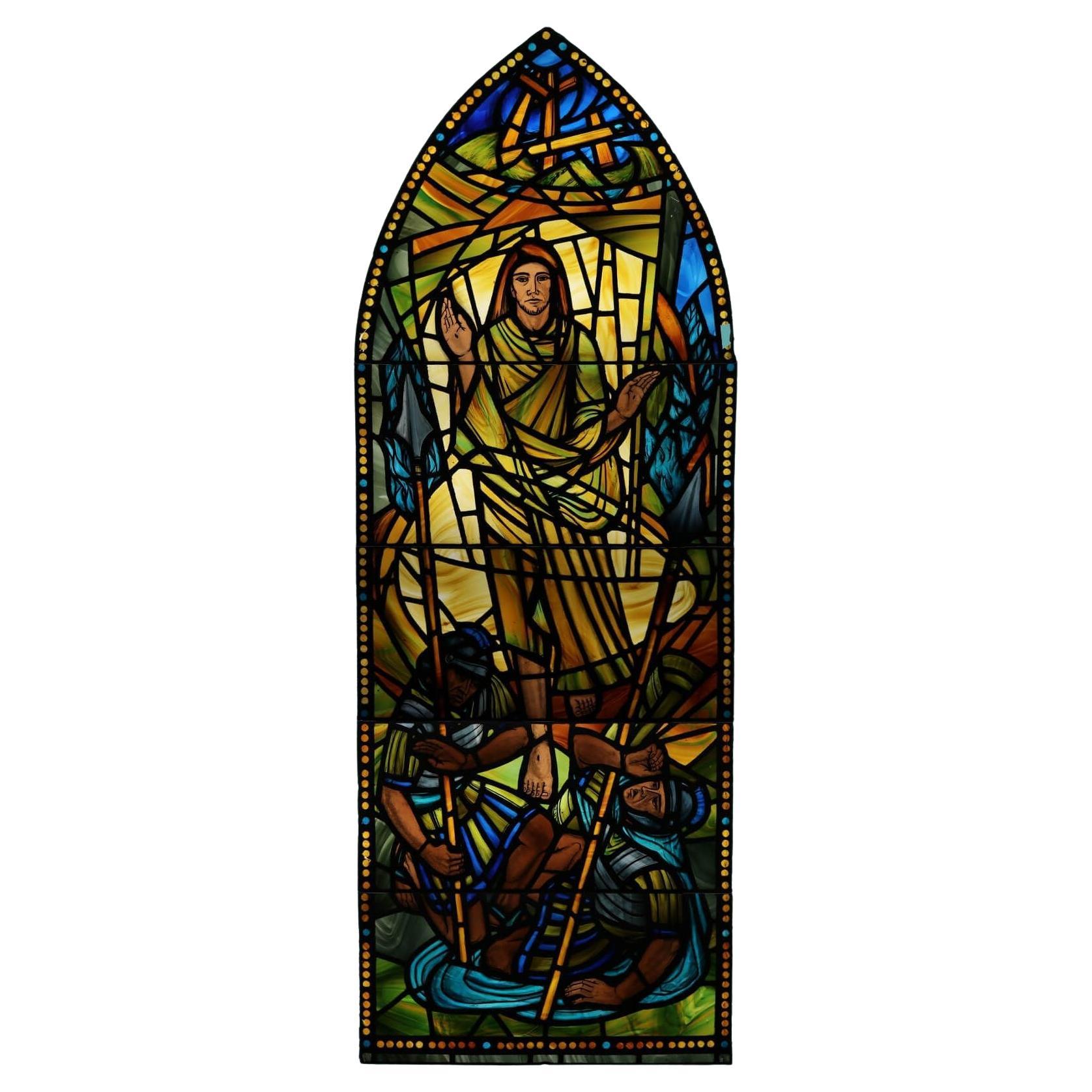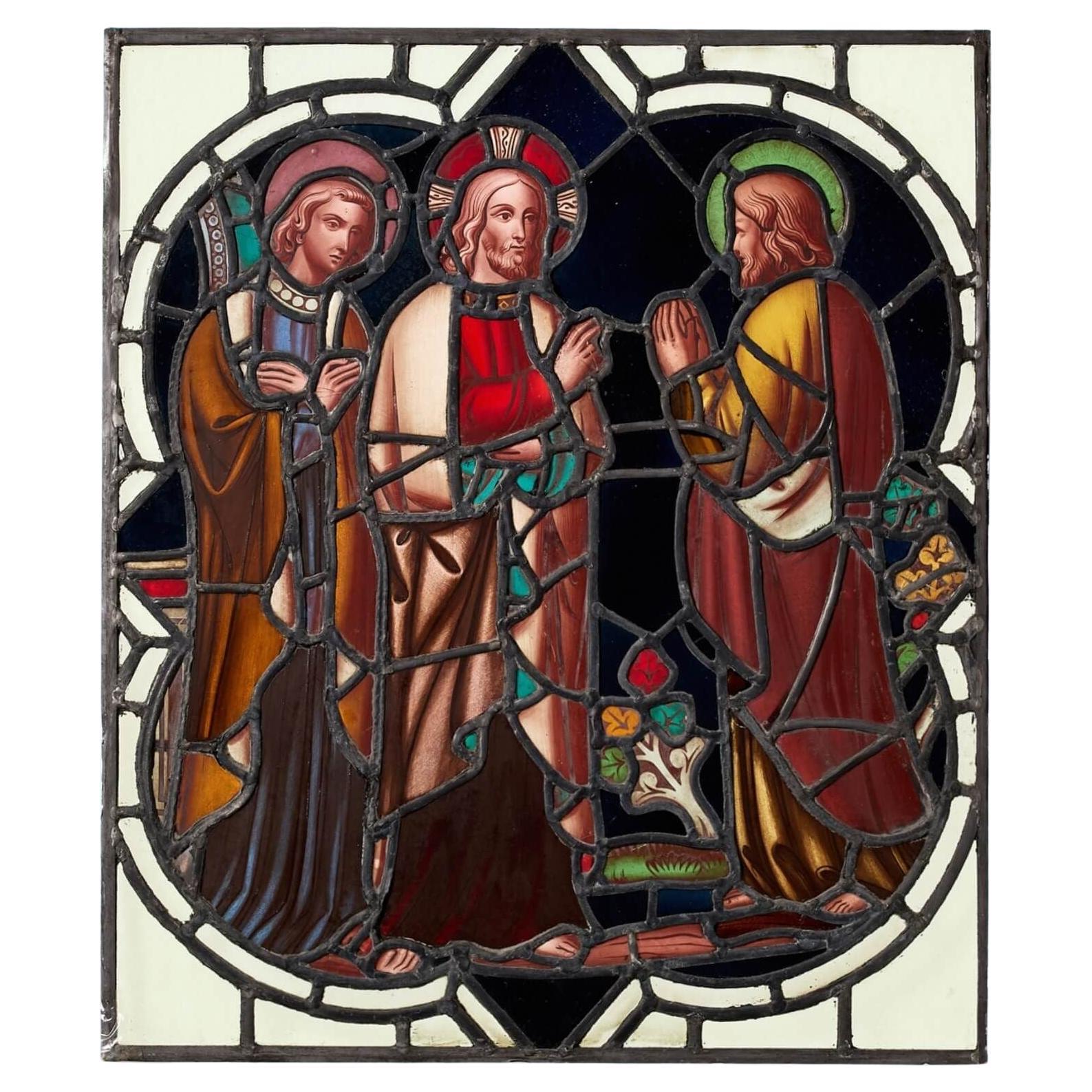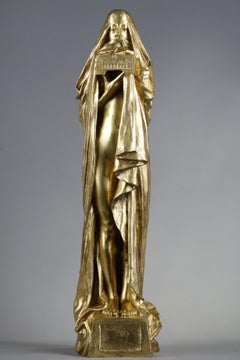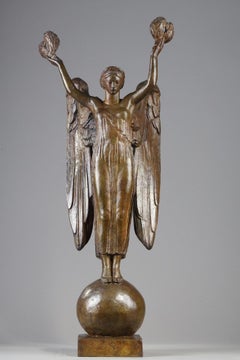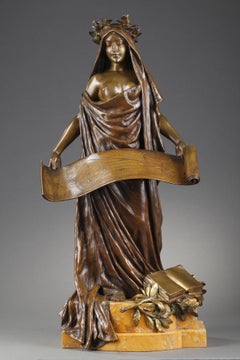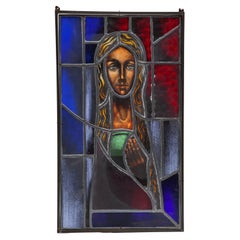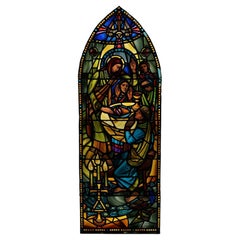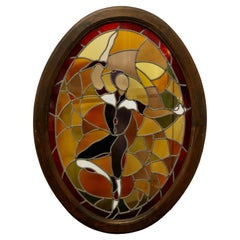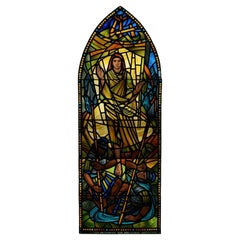Items Similar to Stained-glass window
Want more images or videos?
Request additional images or videos from the seller
1 of 6
François-Emile DecorchemontStained-glass window1934
1934
$57,518.19
£42,685.11
€48,000
CA$79,262.94
A$87,228.06
CHF 45,741.34
MX$1,058,593.51
NOK 571,759.56
SEK 541,297.92
DKK 365,510.83
About the Item
« Ave Maria – Gratia Plena »
Hail Mary full of grace
by François-Emile Decorchemont (1880-1971)
A large and exceptional stained-glass window.
Masterpiece by François Décorchemont.
Stained glass colored in the mass and worked in relief.
Blackened metal frame, cement joints.
SIgned and dated 1934
France
height 125 cm
width 175 cm
It was exhibited at the Salon des Artistes décorateurs in 1934.
This very rare stained glass window was part of Décorchemont's first research in the field of stained glass, before the adventure of the stained glass windows of Saint-Odile Church, in Paris (17th district).
Biography :
François Émile Décorchemont (1880-1971) was a French ceramist and glassmaker. Coming from a family of artists, he studied at the National School of Decorative Arts in Paris, and then made many cameo glass objects that bring him notoriety. Décorchemont invented then a new material, the crystal paste. In the spring of 1912, François Décorchemont presented for the first time at the Salon des Artistes Décorateurs, then at the Salon des Artistes Français, a set of pieces that testified to a new path taken by the artist. The thick and translucent walls, powerful and luminous, of these creations contrasted with the extreme finesse and opacity of the models that, since 1903, date from his beginnings, characterized his glass works.
From 1909, while maintaining his production of fine cameo glass, François Décorchemont was engaged in the experimentation of a new molding technique. With the help of his father, Louis-Emile Décorchemont (1851-1920), a sculptor, collaborator of Jean-Léon Gérôme and professor of sculpture at the National School of Decorative Arts in Paris, he undertook to adapt the process of lost wax casting to glass. At the same time, he was experimenting with a new vitrified paste composition ensuring transparency and light. Of a sensitivity close to the works of Albert Dammouse, the creations of Décorchemont were distinguished however by the refusal of the molding on nature of the natural elements and by a desire for sculptural effects emphasizing the forms and the constructive lines of his decors. This new conception of ornament and this quest for a thick and translucent material, from a perspective that was not only decorative but also constructive, was in line with contemporary research by René Lalique, whose technical advances during the 1910s were part of the same desire for aesthetic renewal.
As a fervent Catholic, it was while attending the church of his village, ornated with windows of the Renaissance, that in the 1930s, it came to him the idea to apply his technique to the art of stained glass. François Décorchemont then developed a unique technique to design stained glass windows not in painted glass but in colored cameo glass in the mass. His new activity began with the construction of the church Sainte-Odile in Paris for which he realized the 300 m2 of windows. At the end of the war, he worked mainly in the Eure, where he posed no less than 130 stained glass windows in thirty churches, including the remarkable ensembles of Beuzeville, Etrépagny or Ménesqueville. François Décorchemont also intervened at the Saint-Wandrille Abbey in Saint-Wandrille-Rançon (Seine-Maritime), at the former convent of Folie Couvrechef in Caen and at the parish church of Fontaine-Henri (Calvados).
Very discreet and not communicating, François Décorchemont kept secret his discoveries and his techniques. Painter, ceramist, glassmaker, he created all his works, drawing, mold, finishing. His work was characterized by a clean design, simple lines and brightness, transparency and brightness of colors. His creations had no functional value but only aesthetic because of their fragility and their cost of production. He edited his works in small series and did not seek performance but aesthetics.

About the Seller
5.0
Recognized Seller
These prestigious sellers are industry leaders and represent the highest echelon for item quality and design.
Established in 1992
1stDibs seller since 2023
10 sales on 1stDibs
Typical response time: 9 hours
- ShippingRetrieving quote...Shipping from: PARIS, France
- Return Policy
Authenticity Guarantee
In the unlikely event there’s an issue with an item’s authenticity, contact us within 1 year for a full refund. DetailsMoney-Back Guarantee
If your item is not as described, is damaged in transit, or does not arrive, contact us within 7 days for a full refund. Details24-Hour Cancellation
You have a 24-hour grace period in which to reconsider your purchase, with no questions asked.Vetted Professional Sellers
Our world-class sellers must adhere to strict standards for service and quality, maintaining the integrity of our listings.Price-Match Guarantee
If you find that a seller listed the same item for a lower price elsewhere, we’ll match it.Trusted Global Delivery
Our best-in-class carrier network provides specialized shipping options worldwide, including custom delivery.More From This Seller
View AllThe Secret
Located in PARIS, FR
The Secret
by Pierre-Félix FIX-MASSEAU (1869-1937)
Sculpture in bronze with a gilded patina
Signed on the side " Fix-Masseau "
Cast by " Siot-Paris " (with the foundry mark)
France...
Category
Late 19th Century Art Nouveau Figurative Sculptures
Materials
Bronze
Bogota's Glory
By Henri Bouchard
Located in PARIS, FR
Bogota's Glory
by Henri Bouchard (1875-1960)
Sculpture in bronze with a nuanced yellow-brown patina
Signed "H. Bouchard" on the base
Cast by "Siot" (stamp)
France
circa 1927
height...
Category
1920s Art Deco Figurative Sculptures
Materials
Bronze
Cristallerie with damselflies
By Émile Gallé
Located in PARIS, FR
Emile GALLE (1846-1904)
Cristallerie with damselflies
Pitcher called "Cristallerie de Gallé",
in form of a gourd made in enamelled hand-blown glass,
decorated with polychrom stains ...
Category
Late 19th Century Art Deco More Art
Materials
Blown Glass
Allegory of Progress
By Louis Chalon
Located in PARIS, FR
Allegory of Progress
by Louis CHALON (1866-1940)
Bronze with dual patina
Raised on a yellow Siena marble base
Signed on the side of the base " L. Chalon "
Old period cast
France
ci...
Category
Early 1900s Art Nouveau Figurative Sculptures
Materials
Bronze
Very important enamel plaque
Located in PARIS, FR
Allegories of Carnal Love and Chaste Love
by Paul GRANDHOMME (1851-1944) and Alfred GARNIER (1848-1908)
Very important plaque in translucent and opaque polychrome enamel on copper,
with gold spangles and gold highlights.
Set in its original silver setting.
Presented in its original morocco leather box...
Category
1880s Renaissance Figurative Paintings
Materials
Enamel
Vase "Erable plane"
By Émile Gallé
Located in PARIS, FR
"Norway maple" Vase
by Émile GALLE (1846-1904)
Rare baluster-shaped vase,
multi-layered glass with powder and gold foil inclusions.
Wheel-carved cameo decoration,
ornated with mapl...
Category
Early 1900s Art Nouveau More Art
Materials
Blown Glass
You May Also Like
Art Deco Stained Glass, Belgium Artist, 1930s
By Leo Vingerhoets 1
Located in Antwerp, BE
A beautiful woman portrait in the glass closed. A stained glass technique in glass gives a magical atmosphere when light falls and changes the color palette intensity during the course of the day. An Antique stained glass panel...
Category
Mid-20th Century Belgian Art Deco Decorative Art
Materials
Art Glass, Stained Glass
Ecclesiastical Religious Stained Glass Window
Located in Wormelow, Herefordshire
A vibrant ecclesiastical stained glass window depicting a religious scene dating from the mid 20th century. This beautiful stained glass w...
Category
Mid-20th Century Scottish Mid-Century Modern Windows
Materials
Lead
Large French Art Deco Stained Glass Panel for a Window or Door
Located in Godshill, Isle of Wight
Large French Art Deco Stained Glass Panel for a Window or Door
This is a lovely piece, it has very attractive leaded glass in beautiful autumn colours with a handsome dancer set i...
Category
Vintage 1920s Art Deco Architectural Elements
Materials
Art Glass
Ecclesiastical Stained Glass Window
Located in Wormelow, Herefordshire
A vibrant religious leaded stained glass window depicting an ecclesiastical scene dating from the Mid-20th Century. This beautiful stained glass window is one of four we are offering...
Category
Mid-20th Century Scottish Mid-Century Modern Windows
Materials
Lead
Antique Religious Stained Glass Window
Located in Wormelow, Herefordshire
An early 20th century antique religious stained glass window circa 1900. Depicting an ecclesiastical scene, thought to be Jesus...
Category
Early 20th Century English Windows
Materials
Lead
Watercolour Design for a Stained Glass Memorial Window in a Church, Jane Gray
Located in London, GB
We acquired a series of watercolour stained glass designs from Jane Gray's studio. To find more scroll down to "More from this Seller" and below it click on "See all from this seller...
Category
Mid-20th Century Modern Drawings and Watercolor Paintings
Materials
Watercolor
